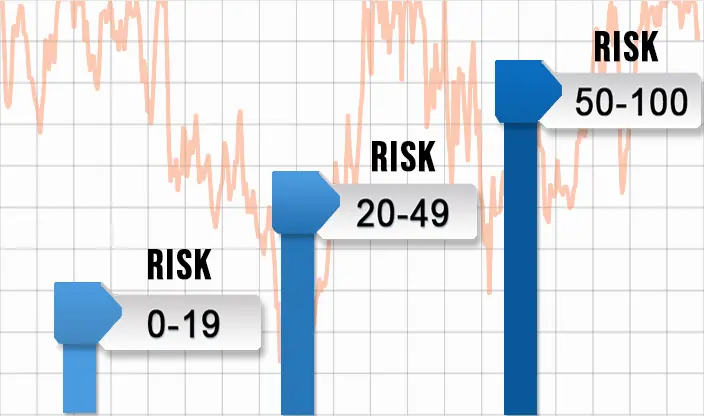The Death Trap
Tax-deferred accounts like traditional IRAs and 401(k)s can seem like smart tools for retirement savings.
Offering upfront tax breaks and years of compounded growth. But what many investors don’t realize is that these accounts can turn into a “death trap” later in life, leading to higher taxes, forced withdrawals, and unexpected burdens on your heirs. Below, we break down the hidden risks that can make these accounts more of a liability than an asset in retirement.
Why Tax-Deferred Accounts Can Be A “Death Trap”
-
While tax-deferred accounts allow your investments to grow without immediate taxation, every dollar you withdraw in retirement is taxed as ordinary income—not at lower capital gains rates. If you’ve built up a large balance in a traditional IRA or 401(k), those withdrawals can easily push you into a higher tax bracket, especially when combined with Social Security, pension income, or annuity payments.
Many retirees assume they’ll be in a lower tax bracket, only to discover that Required Minimum Distributions (RMDs)force out more income than needed—triggering higher taxes, impacting Medicare premiums, and reducing flexibility. What was once a tax break during your working years can become a tax trap in retirement.
Options to Move Tax-Deferred Accounts to More Tax-Efficient Accounts
If you’re concerned about the long-term tax burden of your traditional IRA or 401(k), there are proactive steps you can take to shift those assets into more tax-efficient vehicles. Roth conversions are one of the most powerful tools available, allowing you to pay taxes now in exchange for tax-free growth and withdrawals later. When timed strategically—especially during lower-income years—they can dramatically reduce your future tax exposure.
Other strategies may include combining Roth conversions with lifetime income annuities that don’t increase taxable income, or using life insurance-based planning to pass on tax-free wealth. The right approach depends on your income, age, goals, and legacy priorities—but one thing is clear: doing nothing could mean higher taxes for you and your heirs down the road.
Our team can help you evaluate these options and develop a plan that protects your retirement—and your legacy. If you’re having trouble locating an old retirement account, consider using the Retirement Account Locator tool.
-
How It Works: A Roth conversion allows you to move funds from a tax-deferred account—such as a traditional IRA or 401(k)—into a Roth IRA. While you’ll pay income taxes on the converted amount in the year of the transfer, the benefits can be substantial. Once inside the Roth, the money grows tax-free, can be withdrawn tax-free in retirement, and is exempt from Required Minimum Distributions (RMDs). This strategy offers long-term tax advantages and greater control over your income planning, especially if executed over multiple years with careful tax coordination.
📈 Want to See Today’s Top Annuity Rates?
Explore the most competitive fixed and bonus annuity rates available now.
👉 Check Current Annuity Rates
No Obligation Consultation
Avoid the Tax-Deferred Death Trap
Tax-deferred retirement accounts can seem like a smart way to grow your savings—but without proper planning, they can turn into a ticking tax time bomb. Required minimum distributions, higher tax brackets in retirement, and limited estate planning options often leave families facing unnecessary tax burdens. At Diversified Insurance Brokers, we help you sidestep these pitfalls through proactive strategies like Roth conversions, qualified charitable distributions, and tax-efficient withdrawal planning.
Don’t let hidden tax traps derail your retirement. Contact us today to build a plan that protects your wealth and gives you more control over your financial future.
Discover Your Portfolio Risk—Before the Market Does
Use our Risk Analyzer Tool to uncover hidden vulnerabilities in your current portfolio. Don’t assume your investments are safe—learn your true risk tolerance and take control. Gain clarity, reduce exposure, and protect your retirement from unnecessary market losses.
One Click Away from Coverage — Get a Quote or Apply Today for Life Insurance, Annuities, Medicare & More
From instant term life to guaranteed issue policies, fixed annuities to Medicare supplements, we make it easy to compare top-rated options and apply online in minutes. Whether you’re planning for retirement, protecting your family, or exploring long-term care coverage, you’re just one click away from customized protection.
FAQs: The “Death Trap” of Tax-Deferred Retirement Accounts
What is the “Death Trap” in retirement savings?
The “Death Trap” refers to the downside of having most or all your retirement savings in tax-deferred accounts (like Traditional IRAs or 401(k)s). While they offer upfront tax benefits, they can lead to high tax burdens, inflexible withdrawals, forced distributions, and complications for heirs.
How do RMDs contribute to the problem?
Once you reach the IRS required age (currently 73 for many), you must take Required Minimum Distributions from tax-deferred accounts—even if you don’t need the cash. These forced withdrawals are taxed as ordinary income and can push you into higher tax brackets, trigger higher Medicare premiums (via IRMAA), and increase taxes on Social Security income.
Can tax-deferred withdrawals affect Medicare & Social Security costs?
Yes. Increased taxable income from RMDs or large withdrawals can cause more of your Social Security benefits to be taxed and may trigger IRMAA surcharge deadlines for Medicare Parts B & D, raising your monthly health insurance costs.
What happens to tax-deferred accounts in my estate?
Beneficiaries of tax-deferred accounts may be required to deplete the account within 10 years (for non-spouse heirs), in many cases. Heirs will owe ordinary income tax on amounts withdrawn. Without proper planning, this can result in large, unexpected tax bills for them.
What strategies can help avoid the “Death Trap”?
Some useful strategies include Roth conversions (doing them in years with lower income), qualified charitable distributions (QCDs), diversifying into tax-free or taxable accounts, using annuities or life insurance as part of estate planning, and managing withdrawals to avoid spiking tax brackets.
Is a Backdoor Roth conversion relevant here?
Yes. For high earners who cannot directly contribute to a Roth IRA due to income limits, a backdoor Roth can be a way to move assets into a Roth, which can grow tax-free and aren’t subject to RMDs.
When should I consider implementing these strategies?
It’s usually best to start before reaching RMD age so you have more flexibility. Also beneficial when your income (or tax rate) is temporarily lower, or when your estate planning goals are becoming more pressing.
Disclaimer: Rules around taxation, RMDs, beneficiary regulations, and retirement accounts vary and may change. This information is educational—not tax or legal advice. Always consult with tax and legal professionals for your personal situation.



